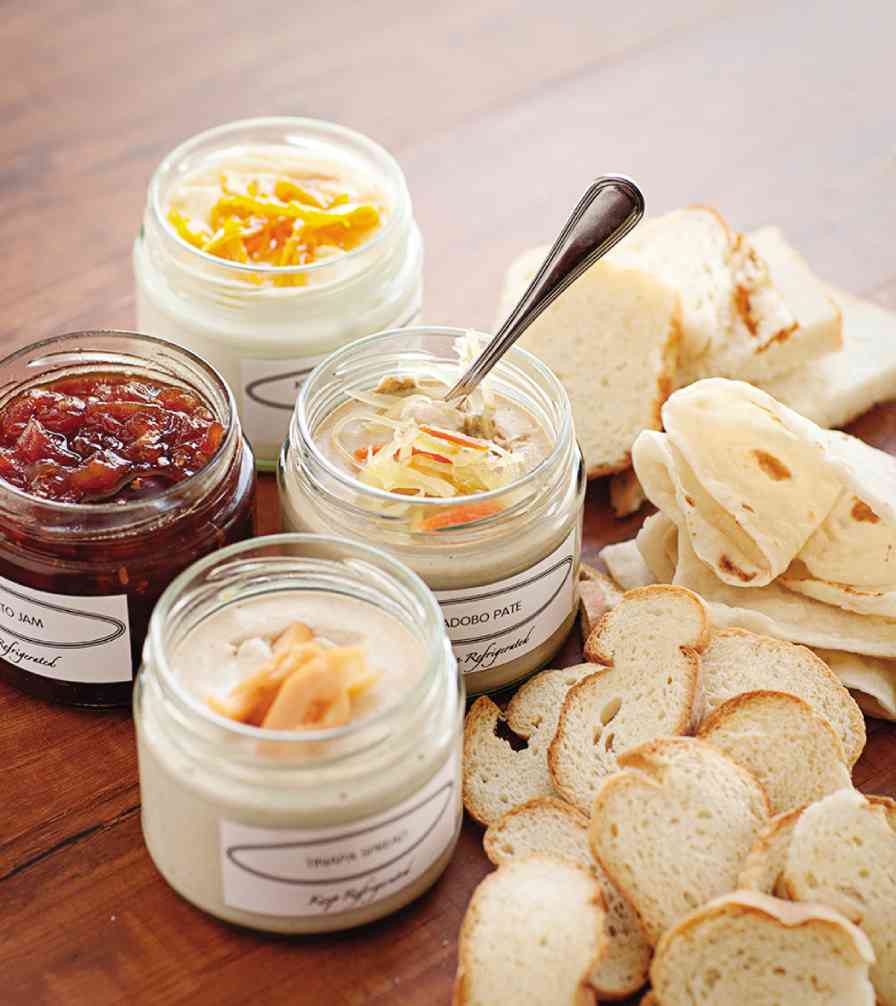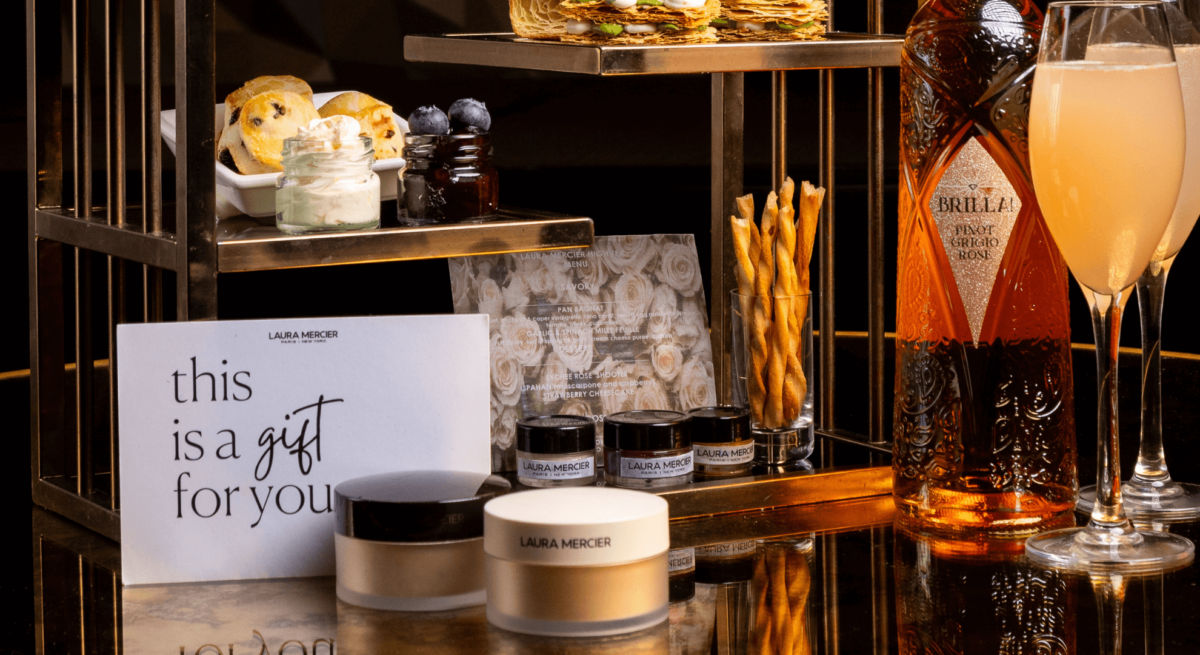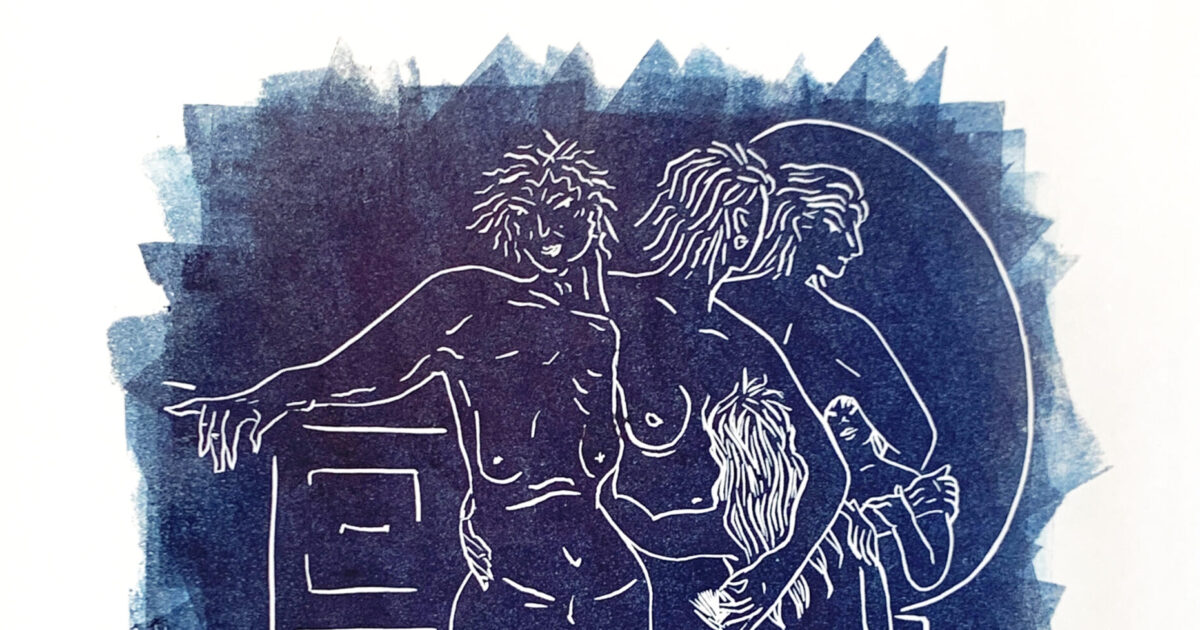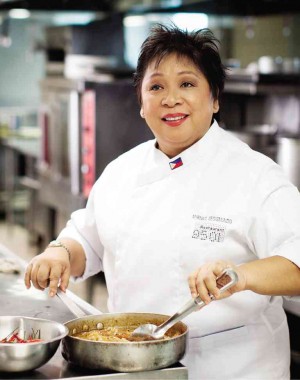
The food festival was billed a repeat performance of Myrna Segismundo at The Peninsula Manila. One year has passed, and now she was going to have her cooking again at The Pen’s Escolta which offers a daily buffet, and at the Lobby.
The bestsellers are back—boneless lechon, roast beef adobo and tamarind chicken, the mechado and estofado of Batangas, all staples of her home province. Glad to see that the empanaditas are there as well, crusty turnovers filled with bean sprouts, quail eggs and longganisa. There’s also her signature dips—adobo pâté and tinapa spread. They are Myrna’s take on traditional food, preserving the flavors but bringing the dishes to modern times.
Emphasis on condiments
She points out that this year, the emphasis is on condiments and dipping sauces. Filipino food has side flavors that “personalize” each dish, as Doreen Gamboa Fernandez called it. For instance, lechon can have liver sauce, but if you’re from the Visayas, or someone like me who doesn’t like liver sauce, the roasted pig on a spit will have a vinegar dip with chopped onions.
Myrna also offers stewed fruit as a sweet alternative.
I was glad to see two kinds of buro, pickled mango and santol. Myrna introduced me to burong santol sold at the Lipa, Batangas market, sweetish but still crunchy. Now she has made her own, she says. It goes with grilled and fried dishes, or merely something to neutralize rich sauces, “pampaalis ng suya.”
The buro are also offered as added flavoring to the salad made with pako (fiddlehead of fern), tomatoes, lettuce and salted eggs. Dressing includes adobo vinaigrette, honey-patis with coriander and muscovado.
Myrna also borrows from Southeast Asian neighbors with her sambal version. It has the required chili with hibe (dried shrimps), shallots, tomatoes and coconut cream. The sambal is a sauce she has imbibed from her travels to those countries where she is always invited to present Filipino food.
Another adaptation is the fresh Vietnamese-like spring roll, rice paper enclosing pako and lato (grapelike seaweed), one in a selection of fresh and fried lumpia with dips that depend on the eater’s preference, whether vinegar by itself, or mixed with chili, maybe patis (fish sauce), soy sauce with calamansi, chili sauce. A collection of condiments and sauces is on the cover of her book, “Philippine Cuisine” (ABS-CBN Publishing, 2005).
She also creates a noodle station with three choices of broth—beef bulalo, sour tamarind and aromatic pandan with coconut milk. For those who want to eat much, just a small bowl should do because the soup can be quite filling.
It is the dinuguan longganisa that makes us smile—a black-and-white ensemble of white puto and black sausage. But why not dinuguan presented as sausage? There is, after all, Spanish morcilla, French boudin, German blutwurst and English black pudding. But that is just Myrna’s way with Filipino food—present other possibilities but keep the taste traditional.
Busy month
It has been a busy month for Myrna as she has also opened a small eatery she calls Caferinderia 9502. You will notice the wordplay on café and carinderia. This one is more upscale than a turo-turo, with food composed of home-cooked dishes like estofado, espada fish stewed in kamias (bilimbi), and fabada.
Myrna is a director of ABS-CBN’s executive dining place, Restaurant 9501, which means Caferinderia 9502 is project No. 2. It is the latest of Myrna’s ventures that also includes private dining at her home.
Although located at one side of a gas station, the look is certainly not carinderia; she has adorned the place with pictures and odds and ends from her travels abroad and around the provinces.
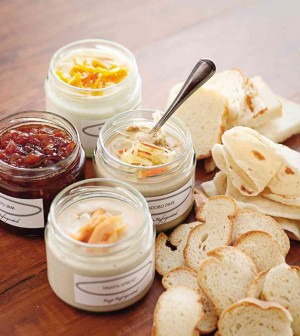
Caferinderia 9502 also offers takeout food, from appetizers to desserts—spreads with potato bread, for instance, packed in containers and displayed in freezers. It’s for people with “empty nests” who find cooking for two a burden; for those who want to party but don’t want to prepare the food; and for those who are tired of their own home-cooking.
While Caferinderia has a simpler menu, for Myrna it’s a lot more work since it operates six days a week (closed on Sundays), 11 a.m.-9 p.m. and the fact that this is her own. Contrast that to the special dining she creates usually for a limited period, like one night, or two weeks like her food festival at The Pen.
The festival at The Pen is until June 29; tel. 8872888; log on to peninsula.com.
Caferinderia 9502 is at the gas station corner Timog Avenue and Sgt. Esguerra, Quezon City.
Claude Tayag, too
What is it with friends who used to cook only by appointment and who are now challenged by creating an everyday restaurant?
Before Myrna did it, sometime ago Claude Tayag opened Downtown, his restaurant in Angeles, Pampanga. The outlet is at a new quad area at Nepo, also in Angeles.
It was amusing to see an explanation to the name Downtown—“a song by Petula Clark released in 1964.” That, I suppose, is for the benefit of the younger generation or millennials, who don’t know the distinction between uptown and downtown or even Petula Clark.
Which also means that Claude, or his wife Mary Ann, will have to explain the décor that recalls the restaurants of downtown Manila in the ’50s and ’60s—the menu painted on mirrors, brand accessories such as clocks displayed, and a jukebox, its function now reduced to the size of a phone.
Even with Claude’s trendier take on his favorites—a bringhe pizza, duck confit with mango, binagoongang tenga (pork ears) and pancit patita or braised pork leg with noodles, the millennials still need to be familiarized with the dishes. But persons of a certain age, like us, get it right away; we can even remember the lyrics to “Downtown.”
E-mail pinoyfood04@yahoo.com.

